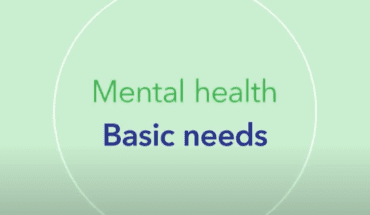How to tackle the nursing crisis: For many people the social restrictions experienced during lockdowns will have had long-lasting consequences, increasing feelings of loneliness, stress and depression.
But throughout the pandemic those employed in hospitals and care settings have faced the same issues, alongside having to deal with the pressures of working on the front-line.
Covid-19 has stretched medical staff to their limit, and with cases continuing to rise in some areas and a growing backlog of patients with other health problems, they are tired, stressed, under-resourced, and some are simply burning out.
So it is perhaps unsurprising that the sector has reported a surge in Covid-related staff shortages.
As of June 2021, National Health Service (NHS) vacancy statistics for England showed there were an alarming 38,952 registered nurse vacancies across the health service.
In a report by the Royal College of Nursing (RCN), it was revealed that the NHS in England recorded 73,209 more sick days among nurses and health visitors in May 2021 compared to May 2019 – a rise of 18%.
The analysis showed that staff are now at greater risk of mental health problems, chest and respiratory problems and migraines than before the pandemic.
The UK government has promised a nursing recruitment drive – increasing the number of nurses in the NHS by 50,000 by 2024-25 – and pledged to increase nurse pay by 3% in recognition of the “extraordinary efforts” of NHS staff during the pandemic.
But whether these measures have any real impact on staff recruitment or retention remains to be seen as nursing shortages are a global issue and there simply aren’t surpluses of trained nurses anywhere. Even if they were available, employing more and more nurses is not a sustainable solution to an ever-growing problem.
A recent article by the New York Times headlined ‘Nursing is in crisis: Staff shortages in US put patients at risk’, quotes an emergency room nurse who describes her work environment as being “like a war zone”, with sick patients waiting to be admitted to hospital and staff left physically and emotionally drained.
In the piece, Patricia Pittman, Director of the Health Workforce Research Center at George Washington University, says: “When hospitals are understaffed, people die.”
The story paints a troubling picture – and shows that the situation is not confined to hospitals in the UK.
That’s why some providers have begun to explore novel technological solutions to their staffing challenges.
It’s an approach that has already attracted the interest of UK government decision makers.
In a keynote speech during London Tech Week, UK Health and Social Care Secretary, Sajid Javid, said he hoped the healthcare progress made during the pandemic under “incredible strain” would pave the way for a “long-awaited digital revolution”.
Javid said the building blocks of this revolution would see out-of-date technology replaced and the adoption of a “truly integrated system” where health service employees can easily access and share patient data.
“It’s only by allowing colleagues to see patients’ information in one place, regardless of what part of the system they use, that we can have a truly integrated system for health and social care,” he said.
While better and safely shared access to patient data is essential, it raises the question of whether even this will make much difference to ever extending waiting times to see a doctor or to get booked in for an operation.
What is needed are new connected digital technologies that automate much of the basic work in the wards, giving nurses more time to care for their patients and doctors the vital information they need to make fast and accurate decisions about a patient’s treatment.
Systems such as Isansys Lifecare’s Patient Status Engine (PSE) provide a way of relieving pressure on staff and freeing up hospital beds.
The PSE is a Class II(a) CE and FDA certified wireless patient monitoring platform that allows clinicians to monitor patients in hospital and at home by automatically collecting real-time physiological data such as heart rate, respiration rate, oxygen saturation, blood pressure and body temperature.
This data is then transmitted via Bluetooth from the Patient Gateway to a central server, then through the nurses’ station, or remotely to clinicians.
This data is filtered and analysed at each point so only the key clinical information is provided.
Smart notifications can alert care teams or clinicians anywhere, any time on computers, tablets or phones.
Patients are also free from wires and cables, and can walk around or even go home, freeing up much-needed hospital beds for those most in need.
The technology reduces the amount of nurses’ time spent in mundane tasks and form-filling, provides a safe way to check in on how those with Covid-19 or other infectious conditions are doing, and allows one nurse to safely monitor several patients at once.
If a patient’s health starts to deteriorate, the system will provide an early warning to nursing staff so they can act on it in a timely and pro-active way.
It’s an approach that has already seen success in the field.
The Sorlandet Hospital in Kristiansand, Norway, used the PSE to allow clinicians and nurses to view vital sign measurements and real-time calculations of patient health direct from a wireless bedside gateway to their nursing stations.
The hospital said the technology freed-up nurses’ time and provided complete and accurate information to support their care decisions, allowing them to focus on a proactive rather than reactive care delivery model.
Birmingham Women’s and Children’s NHS Foundation Trust took part in the RAPID (Real Time Adaptive and Predictive Indicator of Deterioration) project, a ground-breaking study to detect and respond to clinical deterioration in sick children.
The Trust used the PSE platform to monitor and care for children and babies in real-time, helping staff to identify deterioration more quickly so timely treatment could be given.
In all these cases the PSE worked in conjunction with nurses and doctors to free up time and improve efficiency – key areas when care providers are trying to balance high patient numbers with the wellbeing of their staff.
The goal of any care provider is to provide staff with the right tools and optimal working conditions to deliver the best possible care for patients – and ultimately save lives. And that, after all, is what we all want.
First published by https://www.isansys.com/
- New lipid-based pathway discovered as key to memory formation - 25th June 2025
- Crucial link could explain how Alzheimer’s takes hold - 25th June 2025
- Understanding Your Mind Can Improve Daily Life - 25th June 2025






